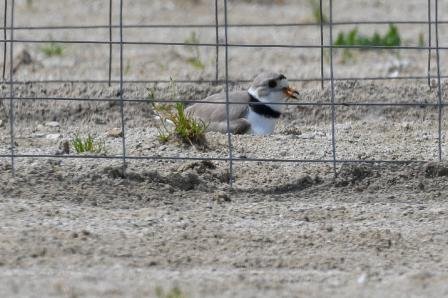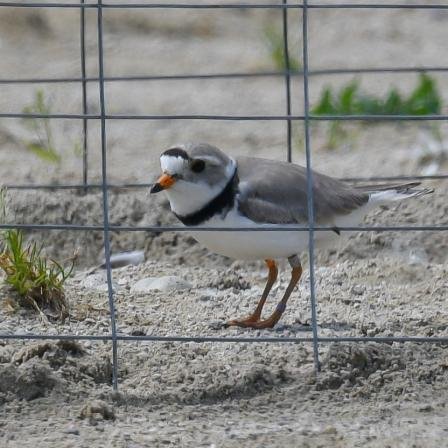Four Piping Plovers Hatch in Toledo, Ohio
U.S. EPA Great Lakes Restoration Initiative funding supports the recovery of this endangered species

CHICAGO (July 2, 2021) – Great Lakes Restoration Initiative funding is supporting the recovery of the endangered piping plovers.
The latest good news is that Nellie and Nish, a piping plover pair, have mated and nested at Maumee Bay State Park, in the Maumee Area of Concern, Toledo Ohio. Four chicks hatched after their eggs were watched around the clock by nearly 100 volunteers.
"While the birds are at the center of all the excitement, they're not the only stars involved in this historic nest. The network of nearly 100 volunteers who answered Black Swamp Bird Observatory's call to action are superstars of bird conservation,” said Kimberly Kaufman Executive Director at the Black Swamp Bird Observatory “This incredible network of volunteers came together on very short notice to monitor the nest from dawn to dusk every day. The data they're collecting has already been put to good use, helping to inform the wildlife agencies as they make decisions about areas to close to protect the young once the eggs hatch. It's an inspiring example of community science in action."
Nellie and Nish are the first piping plover pair to nest in Ohio in over 80 years. The piping plover was listed as an endangered species in 1986 because of its threatened extinction in the Great Lakes. Since the GLRI began, sustained funding has been made available to accelerate the restoration of the Great Lakes piping plover including the monitoring work protecting Nellie, Nish, and their four eggs. As a result, the species has seen a continued upward trajectory in the number of breeding pairs present in the Great Lakes.
Nellie and Nish were hatched last year and traveled a great distance to find each other in Toledo, Ohio. Nish was born to Monty and Rose last year at Montrose Beach in Chicago, Il. Nellie was born last year at the delisted Presque Isle AOC in Pennsylvania. GLRI AOC funding has had such a positive impact that endangered species like Nellie, Nish, and their offspring are now able to thrive in the restored habitat.

